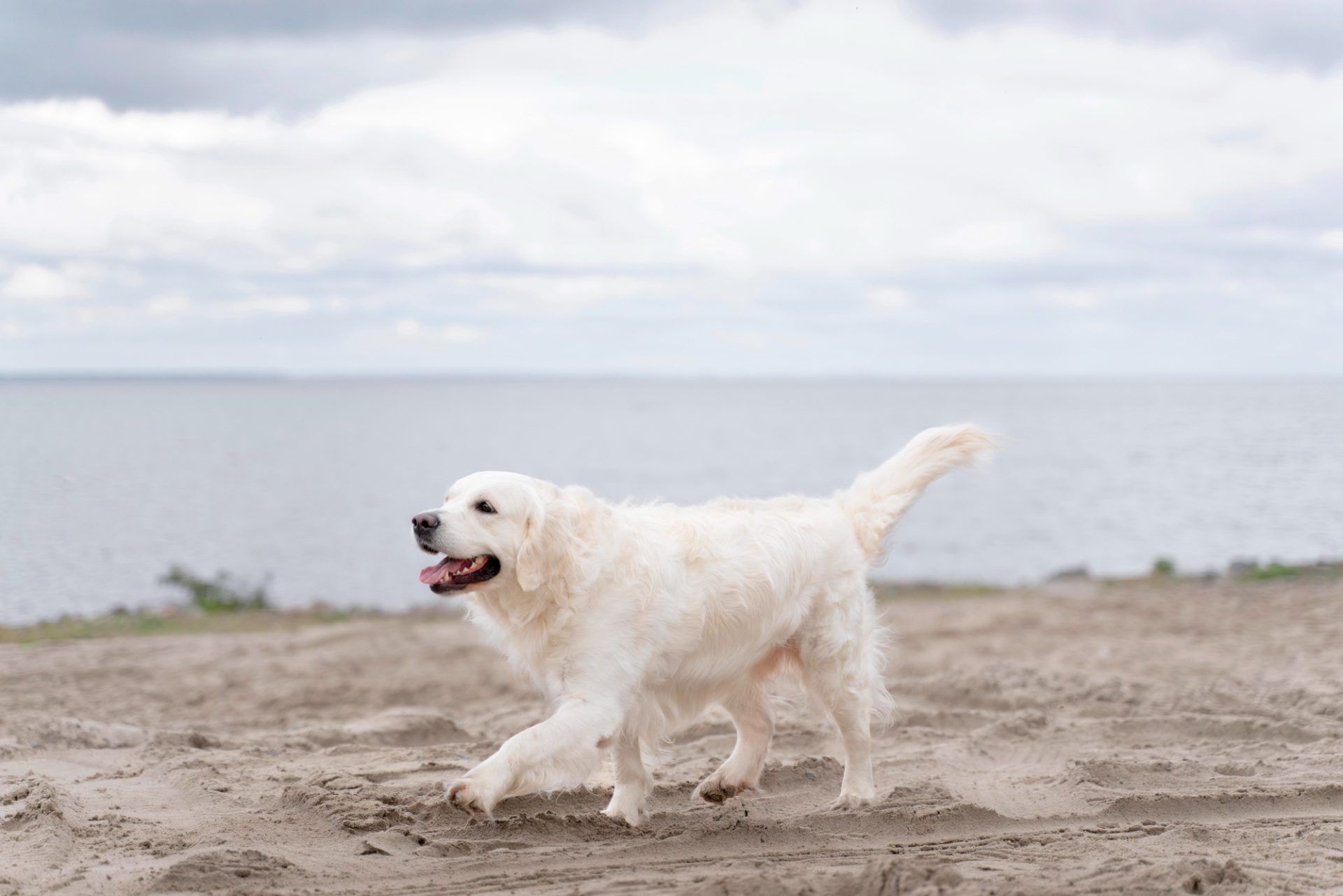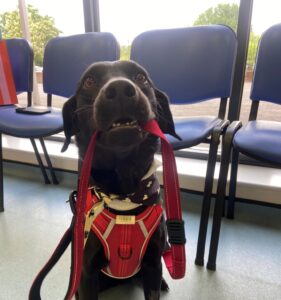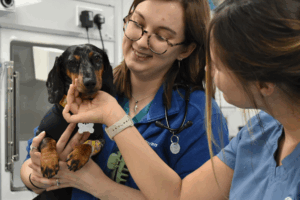Long or short, curly or straight, your dog’s tail is a communication tool that serves as an indicator of how they’re feeling. We often think of a waggy tail as a lovable trait and being a sign of happiness, and though this is often true, it isn’t always the case.
In this blog we’ll look at why dogs wag their tails, along with what some of the different wags may mean.
Communicating emotions
Dogs use their tails as a way of communicating their emotions with us and other dogs, in the same way we would use facial expressions and body language. Studies have shown that the pace and position of the dog’s wag conveys different emotions.
As the shape, size and way the tail moves will vary from breed to breed and individually, it’s a good idea to get your puppy mixing with different well-behaved adult dogs, so they can learn to communicate with each other and not become fearful of other breeds.
Understanding dogs’ tail gestures
Dog owners should stay alert and sensitive to their dog’s tail wagging behaviour to understand their needs, as they could be happy and excited, unsure and anxious, or feeling threatened and aggressive. It’s also important to take into consideration what is happening around them and get to know any potential triggers for your dog.
What do dogs’ tail gestures mean?
Natural position
A natural position, without wagging, indicates your dog is feeling relaxed. The natural tail position will depend on your dog’s breed, but for most dogs it will be hanging down near their heels.
Sweeping tail
A broad, smooth, sweeping tail, that is not tucked or high, means the dog is feeling relaxed and comfortable.
Helicopter tail
When your dog moves their tail in a circular motion (known as a helicopter tail), it usually means they are feeling excited, sociable and pleased to see you, or another dog.
Fast paced wag
A dog that is wagging their tail fast will often indicate they are happy or excited. You may spot them taking a playful stance, or doing an entire body wiggle which says your dog is extremely happy and ready for interaction.
If their tail is erect and fast wagging, be cautious, as their excitable behaviour may be unpredictable.
Stiff tail
If their tail is high in the air and rigid, be wary as this dog tail sign can indicate aggression in dogs. If your dog, or one you meet, starts to display any of these behaviours it’s usually best to give them as much space as possible and wait for them to calm down before interacting with them.
Other signs to look out for are: tail tucked under, paw raising, looking away, growling, flashing teeth, snapping and biting.
Tucked tail
A tucked tail, or a tail that is clamped between your dog’s legs means they are worried or frightened and feel the need to protect themselves. They may need some space.
Side to side wag
Some dogs move their tails from side to side rapidly when focussing on a scent. This movement isn’t to communicate with others, it’s more like a sign of extreme concentration.
Backwards and gentle wag
This dog tail sign says that they’re curious and may be a little unsure of a situation. You may see this if they’ve come across something they’ve never seen before.
Straight tail
A curious dog who’s interested in its environment will often hold its tail out straight.
Difference between wagging left or right
Interestingly, Live Science research has shown if your dog’s tail wags slightly to the right, it’s generally positive and a wag of recognition that indicates they know the person or dog.
Whereas, if it’s wagging to the left it’s generally negative, indicating fear, stress or anxiety. This is because the left hemisphere of the brain, associated with positive feelings, controls the right side of the body.
Know the signs
As we’ve seen, a waggy tail doesn’t simply mean a dog is always happy or friendly.
It’s important to pick up on any worrying signs, and pay attention to your dog’s whole body, including the tail, to understand what they are communicating, to give space or support as required.
If you have small children with you, always make sure you ask another dog owner’s permission before petting, to prevent a nasty bite.
If you have any concerns about your pet, or would like more specific advice, contact your local St Kitts practice:
St Kitts Vets Hartley Wintney: 01252 844044
St Kitts Vets Basingstoke: 01256 844944
Crookham Park Veterinary Centre: 01252 913990
Firgrove Veterinary Centre: 01252 877799





